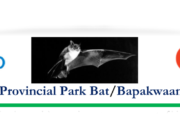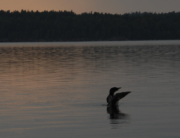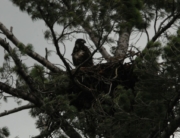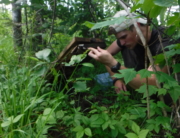by: Michael Rennie, Associate Professor Lakehead University; Canada Research Chair in Freshwater Ecology and Fisheries
We are now into our second year of work in Quetico Provincial Park to investigate the impact of spiny water flea (or Bythotrephes to us scientists). Thanks to generous funding from the Quetico Foundation, we initiated our first full year of fieldwork in Quetico, with some different approaches than originally planned and modifications due to COVID, but were highly successful in gathering critical information to answer our research questions. Much of the fieldwork this summer was focused on collecting aging structures for walleye from lakes that will help us to answer questions about the potential negative impacts of Bythotrephes on early growth rates of Walleye, being led by MSc student Danielle Gartshore.
We also welcomed a new member to the research team, Ben Wood, a graduate of Dalhousie University who will be using data collected this summer and next, in conjunction with data from the Ontario Ministry of Environment, Conservation and Parks to evaluate how mercury concentrations in both walleye and lake herring or cisco are affected by the establishment of Bythotrephes.
With a great deal of planning, several lakes were sampled over the past year, including Batchewaung, Pickerel, French, Saganagons, Kawnipi, and Robinson. Both Danielle and Ben have been hard at work in the lab since, preparing aging structures for age determination and analyzing fish tissues for mercury.
This research into fish growth and mercury concentrations is important for a couple of reasons. First, slower early growth rates mean that walleye (which spawn in the spring) may not get large enough in their first year to survive over the winter- which may mean ultimately fewer walleye in the lake. Second, fish mercury concentrations are important to keep in mind when consuming fish from the Park, and if invasive spiny water flea has impacts on fish mercury concentrations, this will be critical for considering planning and consumption limits for fish in the park if the spread of this invader continues to increase.
Looking forward to the summer of 2022, fieldwork will be planned in conjunction with the Ontario Ministry of Northern Development, Mines, Natural Resources and Forestry and Environment, Conservation and Parks to fill in data gaps for answering questions related to fish mercury concentrations. Results from Danielle’s research will begin to be summarized in the coming year, so stay tuned for what we anticipate will be some insightful and interesting results in next summer’s newsletter.






